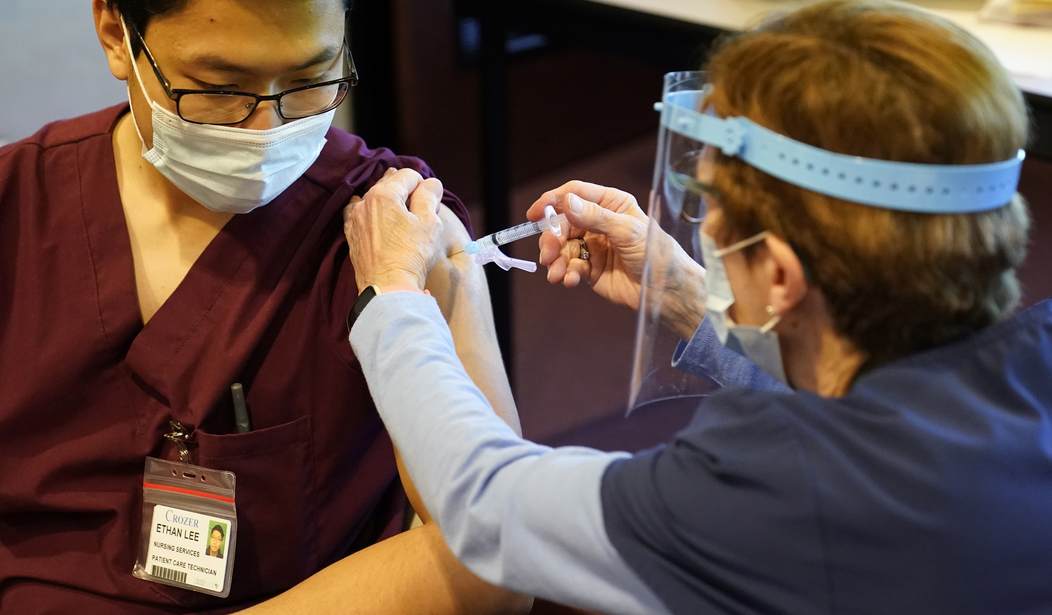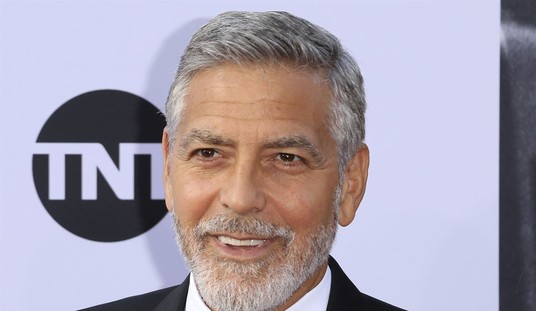Good news, but probably too late. The well has likely been poisoned when it comes to Americans embracing Johnson & Johnson’s product after this.
ACIP, the FDA’s advisory board on immunizations, will confer later today on whether to un-pause the J&J vaccine after it was suspended due to fears that it causes blood clots. Given the paucity of new clotting cases uncovered by the CDC over the past week, it’s a cinch that the vaccine will return to the market. At the very least, it’ll be un-paused for men, among whom there’s not a single confirmed case of clotting linked to J&J.
I remember people speculating after the pause was ordered that there might be some reaction between the vaccine and birth control given that all six cases known at the time happened to women under the age of 48. This new data will do nothing to quell that. All but two of the 15 cases confirmed by the CDC happened among the same group, and all 15 were among women.
Rates of rare clots with low platelets after J&J #covid19 vaccine:
7 per million in women 18-49
0.9 per million in women 50+None in men, though additional cases are under review. (There was a male case from trials; these may just be from post-EUA period) pic.twitter.com/XVdPT897y5
— Meg Tirrell (@megtirrell) April 23, 2021
And $JNJ‘s risk-benefit argument for the vaccine. pic.twitter.com/rYrlVbK6rN
— Matthew Herper (@matthewherper) April 23, 2021
So, a .0007 percent chance of a clot if you’re a woman under 50 and a .0002 percent chance of one across the entire population, or around one in 500,000. It should be noted that these clots were no joke: Nearly half of the victims were hospitalized and three of them died. There may be a connection to the blood thinner heparin too, as six of the victims were treated with that drug before the pause. Doctors now know to avoid administering that drug to patients who’ve recently been vaccinated with J&J so maybe the rate of future clotting cases will be even lower than the current one.
Even so, not every expert thought the decision to pause was the right one. I wondered from the start why the FDA and CDC didn’t continue to dose out the vaccine with a warning about the small but real clotting risk. Some inside the federal health bureaucracy felt the same way:
Some federal health officials felt the move — one of the Biden administration’s most consequential interventions so far in its pandemic response — was a hasty overreaction in the middle of the nation’s vaccination campaign.
Just a day after the Food and Drug Administration recommended the pause, Dr. Doran Fink, a key vaccine regulator with the agency, suggested to the C.D.C.’s advisory panel that if doctors and recipients were given enough information, the vaccine could be brought back into play while researchers continued to study the potential risks.
“Our current thinking is that this risk could be managed by inclusion of warning statements,” Dr. Fink told other experts at the first advisory meeting last Wednesday.
A new Harris poll via Axios shows the price of the J&J snafu in terms of vaccine hesitancy. We can assume the “first day able to” group here will bite the bullet and get their shots no matter what. But how many in the next two groups have been put off COVID vaccines entirely?

We’re trying to convince the wait-and-sees to take the plunge, right? Well, a clear majority of them say the J&J has damaged not just their willingness to get that vaccine but their willingness to get any vaccine. Coincidentally, have a look at the latest data on vaccinations in the U.S. and note the date on which the number peaked before beginning to decline:

The trend began to reverse on April 13, the same day that the CDC and FDA announced the pause.
Two caveats, though. I’ve made this first point before: It may not have been the pause per se that frightened people about Johnson & Johnson but rather the revelation about blood clots that led to the pause. I don’t know that we’d be in a better world with respect to vaccine hesitancy if the FDA had done what I wanted and let the J&J doses continue but with a warning about clot risks. Once Americans knew that a dangerous new side effect had been discovered belatedly, I think they were destined to shrink from J&J even after being reassured that the risk was remote.
Second, even if J&J hadn’t been paused, how many doses of it were left in our stockpile to be dispensed to the public? The blood-clot problem isn’t the company’s only setback lately, remember. They lost 15 million doses a few weeks ago due to a mix-up at the Emergent BioSolutions plant in Baltimore that was producing J&J’s vaccine. A subsequent investigation of the plant by the FDA found that conditions weren’t sufficiently sanitary to make vaccine production safe and discovered cross-contamination between two different vaccines produced there. Between the manufacturing snafu and the blood-clot problem, the White House is reportedly increasingly prepared to “write off” J&J after hoping it would be a single-dose gamechanger for the more vaccine-hesitant segment of the population.
The Biden administration has stood by Johnson & Johnson as the vaccine maker struggled to deliver promised doses of its Covid-19 vaccine — but privately, frustrated senior health officials have largely written off the shot, according to seven people with knowledge of the matter…
[T]he Biden administration is bracing for yet another potential complication: If ongoing tests of remaining vaccine batches made by J&J’s contractor Emergent BioSolutions reveal further contamination, it could take the vaccine maker up to four months to replace those doses through manufacturing at alternate facilities, according to two people with direct knowledge of the situation…
With Emergent’s woes setting the company up for months of repairs, the administration has sought to accelerate J&J vaccine production at a separate facility run by Merck, which agreed in March to help churn out doses. But the pharmaceutical giant’s vaccine facility will not be ready until September, according to a senior administration official.
The White House was eyeing J&J as a vaccine that might hold special appeal to rural Americans, who are more resistant to the idea of getting vaxxed and may have to travel longer distances to do it. A one-shot product was more likely to get them to take the plunge than the two-shot mRNA vaccines were. And J&J didn’t require the kind of special deep-freeze storage that Pfizer and Moderna do that’s less common outside urban centers.
As it is, even if those rural dwellers can still be convinced to roll the dice on J&J after the blood-clot scare, it may be months until there’s enough supply due to the manufacturing screw-up.
In the end, if they can iron out the kinks, J&J may end up in the same position as AstraZeneca, a vaccine whose easy storage and special advantage (cost in AZ’s case, single-dose in J&J’s) may make it a good fit for poorer countries even though it’s not in wide use here. Assuming we can get those countries to accept it after the blood-clot news, I mean.








Join the conversation as a VIP Member